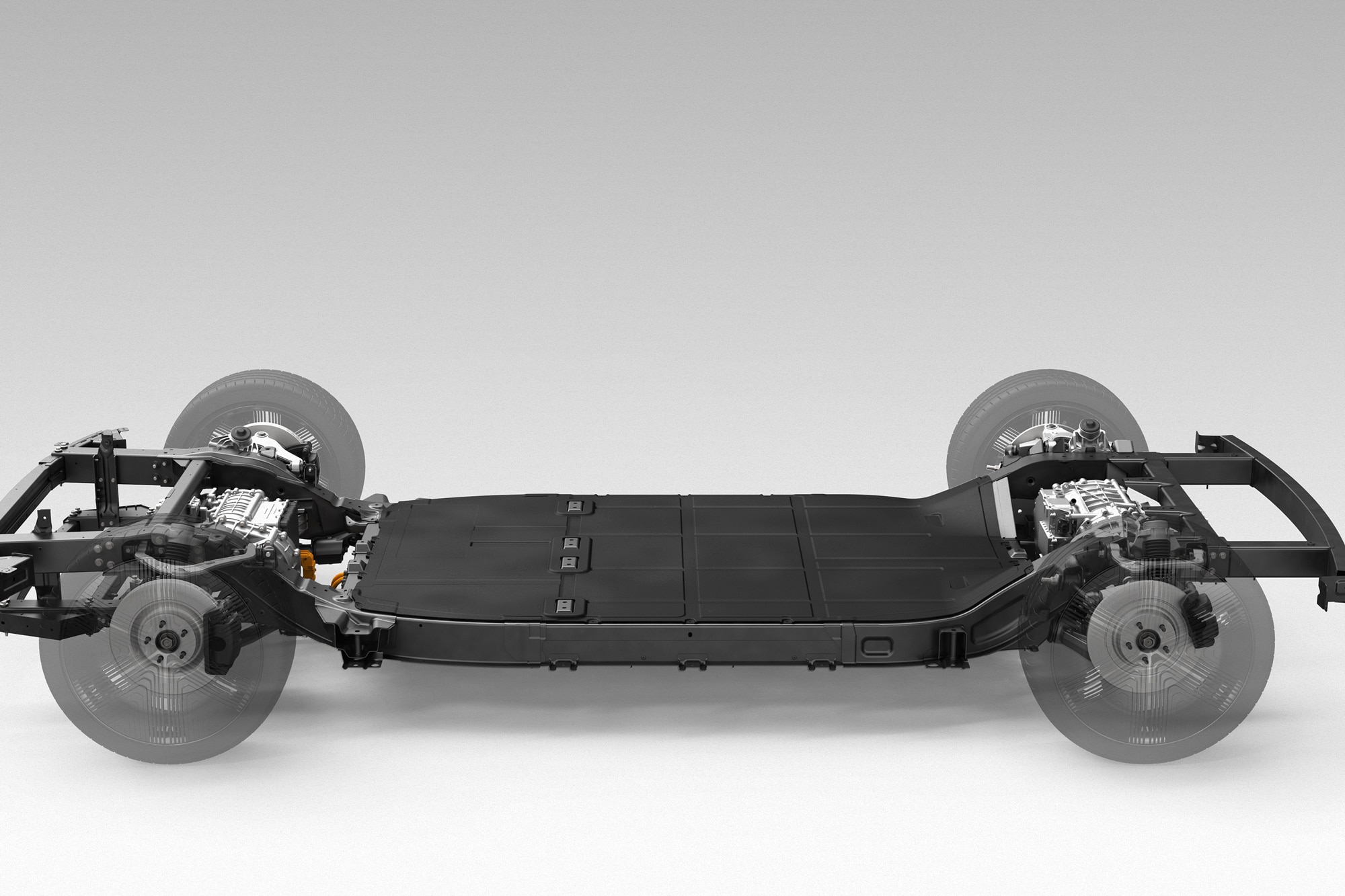What is a Skateboard Platform?
Most modern electric cars have giant batteries built into the floor of the car. Here’s why.
 Hyundai
Hyundai
QuickTakes:
Most electric cars are built in a very different way from traditional gasoline-powered vehicles. Rather than putting an engine up front and sending power to the drive wheels — and needing to route things like fuel lines and complicated mechanical components like the driveshaft or differentials around, electric vehicles (EV) are rather simple.
Nearly all current-generation EVs use something nicknamed the skateboard platform. It combines a massive battery along the entire frame of the vehicle with one or more motors at the axles. The giant battery looks something akin to a skateboard, a big flat panel, with wheels at each corner, so it’s well named. Newly developed, dedicated-EV platforms like the E-GMP from Hyundai, Ultium from General Motors, and the MEB from Volkswagen all use variants of the skateboard.
There are a lot of advantages to an electric vehicle (and some disadvantages too, it should be acknowledged), but many of the benefits of an EV are thanks to the skateboard chassis.
Vehicle Design
The skateboard allows something of a blank canvas, unrestricted by the requirements of a traditional gas-powered car where the engine must go at the front and the gas tank must go somewhere. Instead, it’s a big, flat surface on which to build a vehicle. GM says it can build just about every kind of vehicle on its Ultium skateboard, from the massive GMC Hummer EV Pickup all the way down to a crossover like the upcoming Chevrolet Blazer EV. This flexibility allows for companies to share common components between very different vehicles, driving down costs and supply chain complexity.
If you’ve been in the backseat of a rear- or all-wheel drive vehicle and seen a massive hump between the rear seats, you’ve seen one of the downsides of the internal combustion engine. That hump is necessary because drivetrain components must physically go somewhere. The passenger experience is compromised as a result. A car built on a skateboard platform, on the other hand, can have a completely flat floor. Designers can explore layouts that make cars feel much larger on the inside than you might expect on the outside.
The Hyundai Ioniq 5 EV, a car built on the new E-GMP skateboard platform, is sized like a compact SUV (182.5-inches long), but has a longer wheelbase (118.1-inches) than the much larger Hyundai Palisade three-row SUV (114.2-inch wheelbase, 196.1-inches long). Inside, the car has spacious storage on the floor. It feels much larger than it looks from the outside. The flexibility of the flat-floor skateboard platform makes that possible.
Performance
A skateboard platform also has performance advantages. While EV batteries are extremely heavy, electric cars "tend to have a lower center of gravity than conventional vehicles, making them more stable and less likely to roll over,” according to the Alternative Fuels Data Center.
That lower center of gravity, along with electric motor benefits like instantaneous torque, helps give many EVs their sporty feel. If you’ve ever felt a large SUV or pickup lean in a sharp corner, that’s due to that vehicle’s high center of gravity.
Written by humans.
Edited by humans.
 Jordan Golson
Jordan GolsonJordan Golson is a transportation reporter covering cars, trains, planes, future cities, mobility and more — basically, if it moves and doesn’t go to space, he's on it. He is especially interested in the intersection of transportation and technology, and that means he goes deep into electric cars, autonomous vehicle tech, sensors, safety, connectivity, and similar topics.
Related articles
View more related articles